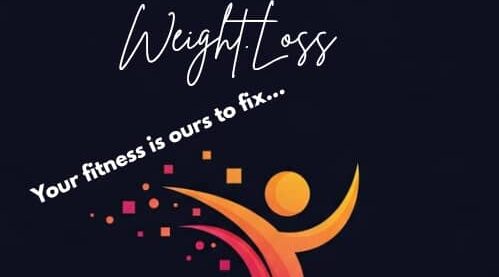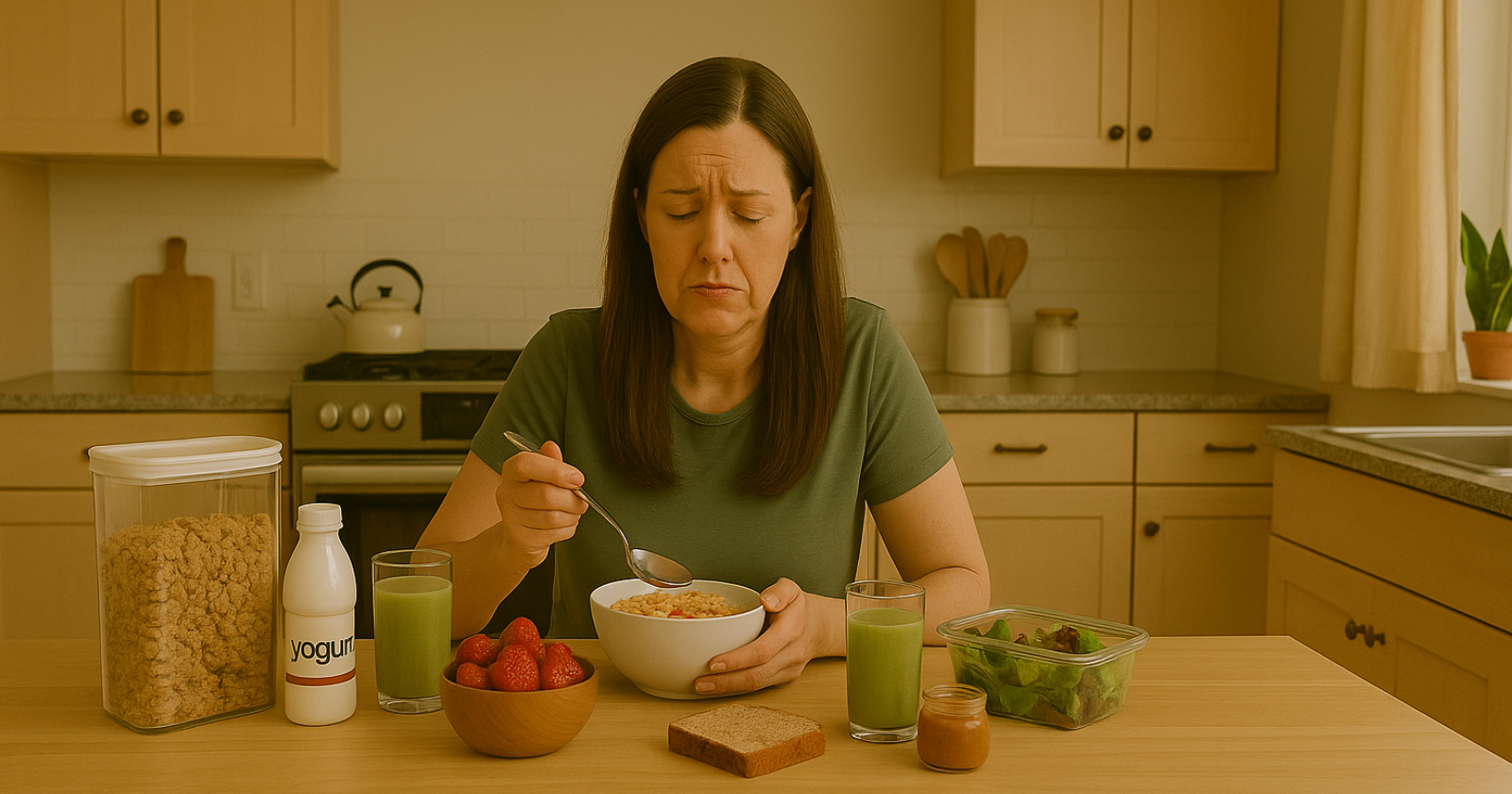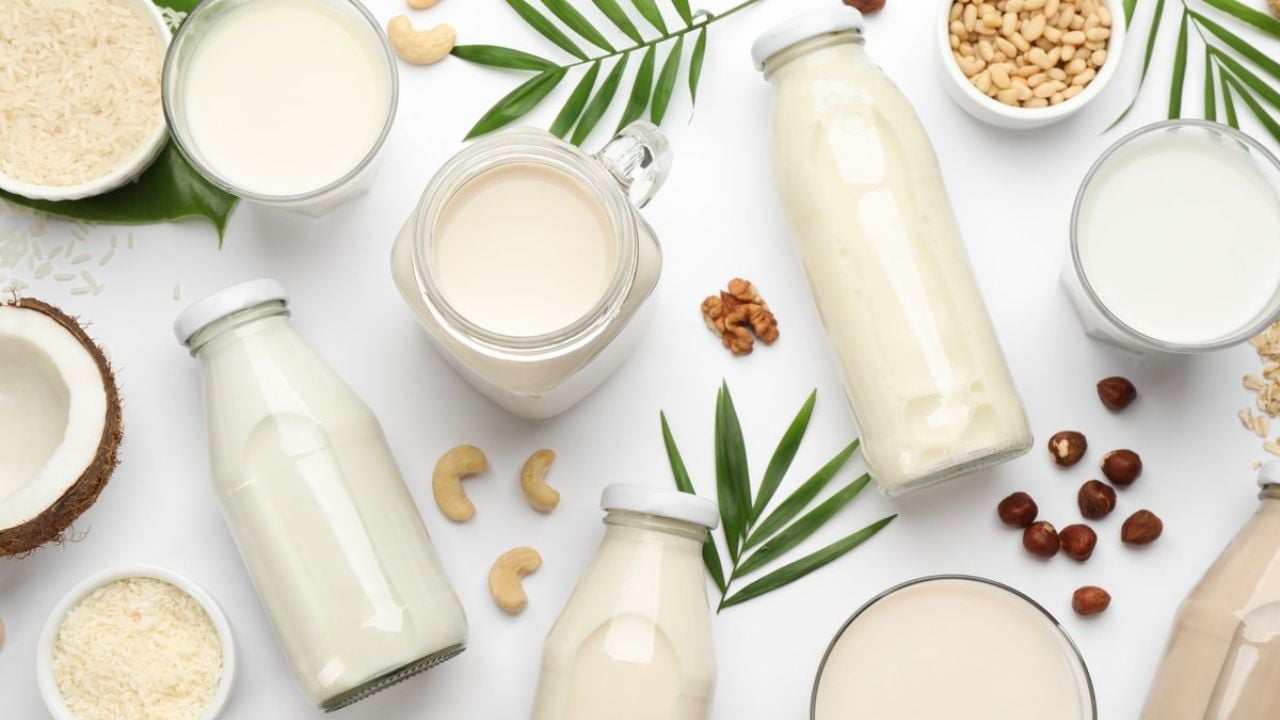7 “healthy” foods that actually make weight loss harder
When you’re trying to lose weight, it’s natural to lean toward foods that seem wholesome or marketed as “healthy.”
The problem is, not all of them work the way you think they do. Some are nutrient-rich but calorie-dense, while others are marketed with a health halo that hides sugar, additives, or oversized portions.
That doesn’t mean these foods are bad or that you should never eat them. It simply means that if you’re reaching for them daily without considering portions or ingredients, they might be quietly undermining your goals.
Here are seven “healthy” foods that can make weight loss harder—and what to do instead.
1. Granola
Granola seems like the poster child for healthy eating. It’s packed with oats, nuts, seeds, and sometimes dried fruit.
The problem? Most store-bought granola also contains excessive amounts of added sugar, honey, syrups, and oils. That turns what could be a high-fiber breakfast into something with as many calories as a dessert.
A small serving—often just half a cup—can easily reach 200–300 calories, and most of us pour at least twice that much into a bowl without realizing it.
Pair it with sweetened yogurt or milk, and suddenly you’ve got a meal that rivals a fast-food breakfast sandwich in calories.
If you love granola, don’t panic. The trick is to use it as a topping rather than the main event—sprinkle a small handful on plain Greek yogurt or oatmeal instead of making it the base of your meal. Better yet, try making your own at home with less sugar and oil.
2. Smoothies and juice blends
Smoothies and juices are often marketed as the ultimate “clean” fuel for your body. And yes, they can be packed with vitamins and minerals.
But the problem is how much fruit (and sometimes extra sweeteners) gets packed into a single cup. One smoothie can easily contain three or four servings of fruit—meaning a big dose of natural sugar, without the fiber you’d get from eating fruit whole.
Juices are even trickier because all the fiber is stripped out. That leaves you with a concentrated sugar hit that spikes blood sugar and leaves you hungry again shortly after.
Smoothie shops often supercharge their drinks with syrups, honey, flavored yogurt, or nut butter—making them as calorie-dense as a milkshake.
If you love smoothies, build them with balance in mind: a handful of greens, one serving of fruit, some protein (like Greek yogurt or protein powder), and healthy fats in moderation. That way, you’re drinking something that actually supports satiety instead of undermining it.
3. Flavored yogurt
Yogurt itself can be a fantastic food for weight management—high in protein, probiotics, and calcium.
But not all yogurts are created equal. Flavored versions, even the ones marketed as “low-fat,” are often loaded with added sugars. Some cups contain the equivalent of a few spoonfuls of dessert without people realizing it.
The “low-fat” label can make things worse. When companies strip out the fat, they often add sugar or artificial sweeteners to make the yogurt palatable again.
So while you might think you’re making a smart choice, you could be consuming a sugar bomb that leaves you hungrier later.
The better choice? Plain Greek yogurt with fresh fruit or a drizzle of honey if you want a touch of sweetness. It keeps protein high, sugar low, and gives you more control over what’s going into your bowl.
4. Energy bars and protein bars
Have you ever grabbed a protein bar thinking it was a healthier alternative to a snack or meal?
Many of these bars are essentially candy bars in disguise. They’re dense with sugar, syrups, chocolate coatings, and calorie counts that rival a full meal.
While some bars are genuinely balanced with protein, fiber, and moderate sugar, many are heavily processed. If you’re not checking the label, you might be eating something that has more in common with a Snickers than with a lean piece of chicken or a handful of almonds.
The key is to treat bars as an occasional convenience food, not a daily staple. If you’re on the go, choose bars with at least 10 grams of protein, under 8 grams of sugar, and a short ingredient list you recognize.
Otherwise, whole foods like boiled eggs, nuts, or fruit with nut butter are often better bets.
5. Dried fruit
Dried fruit is often seen as a nutrient-dense snack—and it can be, in moderation.
But here’s the catch: when fruit is dried, the water is removed, and all the sugars are concentrated. That means a handful of dried mango or raisins delivers a much higher sugar load than the same amount of fresh fruit.
It’s also dangerously easy to overeat. A small bag of dried cranberries, for example, can pack in as much sugar as a can of soda. And because it doesn’t fill you up the way fresh fruit does, you may end up eating far more than you intended.
If you enjoy dried fruit, treat it like candy—a small handful is fine, especially paired with protein like nuts. But relying on it as a “healthy snack” can quietly sabotage your calorie goals.
6. Gluten-free packaged snacks
Here’s a question: how many times have you seen “gluten-free” and automatically thought “healthy”?
Food companies know this trick well. While gluten-free options are essential for people with celiac disease or gluten intolerance, most packaged gluten-free snacks aren’t inherently better for you.
In fact, they’re often made with refined starches like rice flour or potato starch, which can spike blood sugar just as much—or more—than wheat-based versions. To improve taste and texture, many of these products add extra fat, sugar, or sodium.
If you don’t have a medical reason to avoid gluten, choosing gluten-free cookies, crackers, or muffins just for health’s sake won’t necessarily help your weight loss goals.
Whole, minimally processed foods—whether they contain gluten or not—are usually the smarter move.
7. Nut butters
Nut butters like almond, peanut, or cashew butter are often touted as healthy fat sources—and they are. They’re packed with nutrients, protein, and satiety-boosting fats.
But they’re also extremely calorie-dense. Just two tablespoons can hit 200 calories, and it’s all too easy to let the spoon keep dipping.
I’ve fallen into this trap myself—telling myself I was just having a “small” snack, only to realize I’d eaten half a jar while working at my desk. That kind of unconscious eating can quietly add hundreds of calories to your day without you noticing.
The solution isn’t to avoid nut butter, but to use it mindfully. Stick to measured servings, pair it with fruit or whole-grain toast, and resist eating it straight from the jar. That way, you still enjoy the benefits without derailing your calorie balance.
Final thoughts
The problem with these foods isn’t that they’re unhealthy. It’s that they’re easy to overdo—or easy to assume are helping when they’re actually holding you back.
Granola, smoothies, yogurt, and nut butters—they all have a place in a balanced diet. The key is being aware of portions, hidden sugars, and the difference between clever marketing and true nutrition.
Weight loss doesn’t require cutting out entire food groups or living on salads. It requires honesty about what you’re eating and how much of it.
Once you understand where sneaky calories hide, you can enjoy these foods in ways that support your goals rather than sabotage them.



